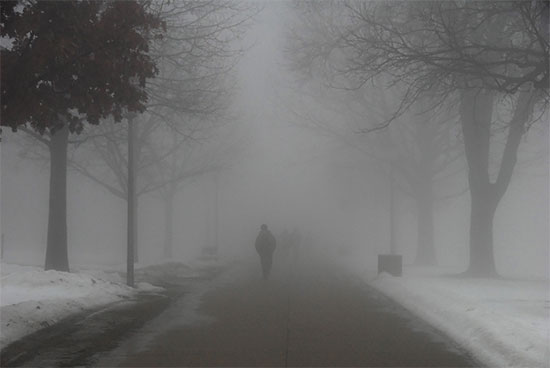Until a month or so ago, I spent nearly two decades writing a daily column for The Independent (a newspaper which has now disappeared in print). This was for an audience who didn't necessarily want to get their chess news from the web but preferred it distilled. The chess content was arguably secondary for a good proportion of readers, but they are very different from the people here, and instead I'd like to be much "chessier".
A game of chess is a battle both against your opponent and yourself. You have to make decisions almost every move (apart from very obvious ones including recaptures). The problem is to express yourself while avoiding blunders, though absolutely everybody from Magnus Carlsen down makes these occasionally,and to follow your desires while maintaining sufficient balance to remain within what is reasonable in the position.
This sounds both high level and abstract and obviously top players will be able, when on song, to produce games far beyond the level of club players. However, it still applies to club players, who must make decisions based on their understanding. They too must find their way through a maze of possibilities - or if you prefer, peer into the fog.

The fog that surrounds a game can be difficult to disperse even with a top engine
In this column I'd like to dispel some of that fog through analysing readers' games and/or answering specific questions. When working with students I normally start by asking to look at a game they are proud of and one they are not. And ideally I'd like readers to send in one of both - Ecstasy and Agony - though if you'd prefer just the former to be in print that's totally understandable. I can either analyse the whole game or focus on a particular position.
With the proliferation of strong chess engines, it's become not only easy to analyse your games with them but hard to resist their use. They provide a merciless commentary on the tactics, which we all often miss, but have only a limited connection to what is actually happening when two human beings do battle across the chess board: and often skew the viewpoint of spectators when watching games online.
I therefore propose to analyse readers' games as much as possible without an engine on. What I'm interested in, is identifying the critical decisions and "flow" of the game and neither concept is endemic to the silicon assistance we now employ. The engines are very addictive though so I imagine that I will check with one of our silicon "best enemies" for a second opinion and to error check.

Readers are invited to send in games in which Jonathan Speelman will help make sense of it
and thus help players fulfill their potential
I always think it's a miracle when I or anybody else plays a really good game or even avoids significant tactical mistakes. So I'm certainly not intending to be critical of anything that readers are kind and brave enough to send.
Please do send games to my email: jonathan@speelman.demon.co.uk You can also contact me there to arrange coaching or for anything else.
For the moment since what may be a trickle or a deluge of games hasn't yet started I thought I'd revisit a game at the very pinnacle of world chess - Carlsen vs Kramnik from Stavanger. I was watching this in a local cafe as it happened, and analysed both with and without an engine. Subsequently, information has also surfaced about the provenance of the novelty that Carlsen played. I'm not going to look at the whole game in detail, but just at the opening battle up to the moment when Carlsen established control.
|
About the author
Jon was born in 1956 and became a professional player in 1977 after graduating from Worcester College Oxford where he read mathematics. He became an IM in 1977 a GM in 1980 and was a member of the English Olympic team from 1980-2006. Three times British Champion he played twice in the Candidates reaching the semi-final (of what was then a knockout series of matches) in 1989 when he lost 4.5 - 3.5 to Jan Timman. He's twice been a second at the world championship for Nigel Short and then Viswanathan Anand against Garry Kasparov in London 1993 and New York 1995. He's written the Observer (weekly) since 1993 and The Independent since 1998. With its closure (going online but without Jon on board) he's expanding online activity and is also now offering online tuition. He likes puzzles especially (cryptic) crosswords and killer sudokus. If you'd like to lambast Jon or otherwise he can be contacted via his email |

|


























